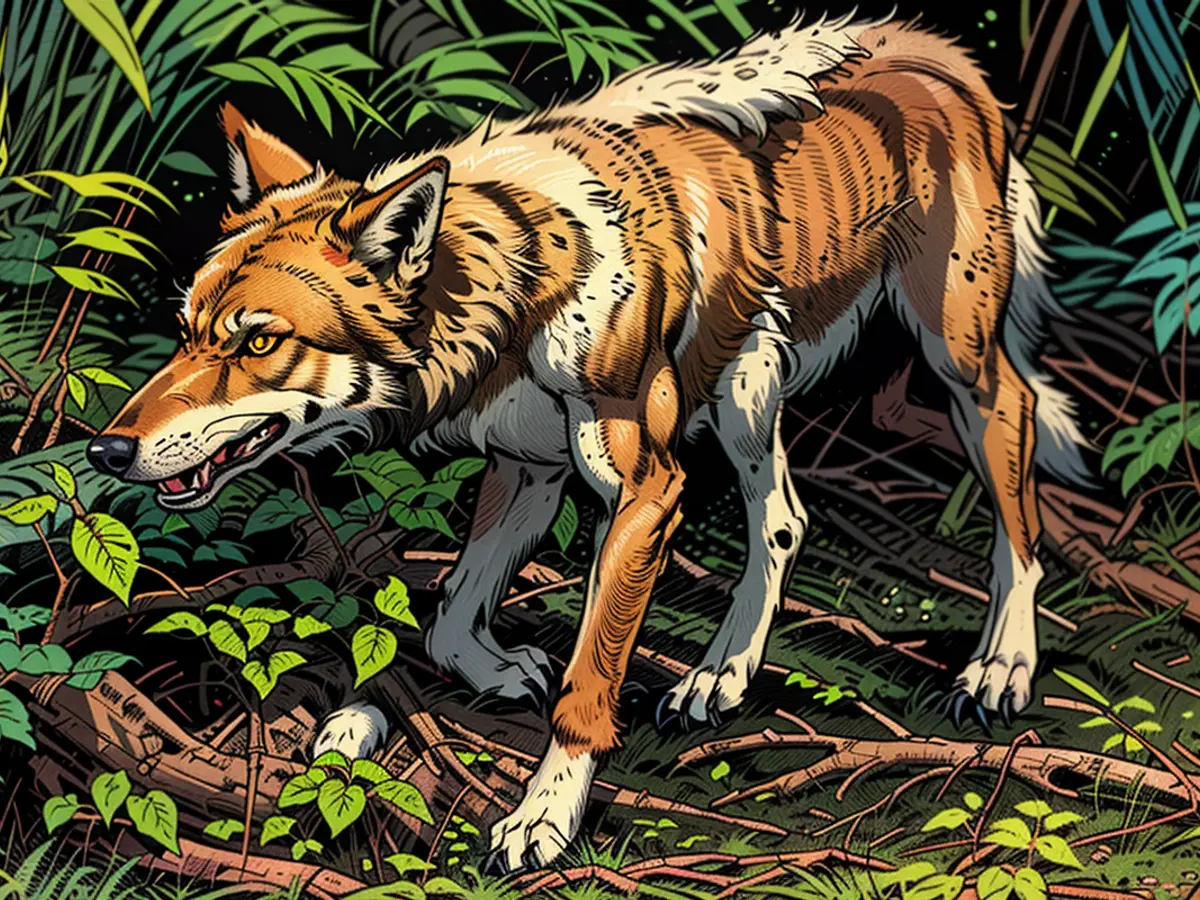The number of found wolves is increasing considerably
Wolves return after 150 years to Germany. The strictly protected species is spreading throughout Germany. By May, every dead animal is examined on the dissection table. However, this is no longer feasible, reports the responsible institution.
The number of dead wolves found is now so large that only every second one can be examined in detail. Until early May, every dead find landed in the CT scanner and on the dissection table, explains the Leibniz Institute for Zoo and Wildlife Research (Leibniz-IZW) in Berlin. However, this is no longer feasible with over a hundred dead wolves per year.
Recently, the 1000th dead wolf was examined at the institute. About three quarters of these wolves died in traffic accidents. Every tenth one was illegally shot, although wolves are strictly protected in Germany and cannot be hunted. Since 1990, 17 wolves have been legally killed.
The 1000th animal was a she-wolf, who was pregnant with six cubs. This symbolically represents the successful breeding of the animals, explained Heribert Hofer, Director of the Leibniz-IZW.
Living together as a challenge
For almost a quarter century, wolf cubs have been born in Germany again. Coexistence brings challenges – for humans and animals. In the latest wolf monitoring, over 1339 wolves were detected in Germany, distributed over almost all federal states, with focal points in Saxony, Brandenburg, Saxony-Anhalt, Mecklenburg-Vorpommern and Lower Saxony. The dead finds also come from various parts of Germany.
Frequently, it was cubs - at least 550 cases. 838 wolves died due to traffic impact, 95 were illegally killed, 17 were killed legally as part of management, 90 wolves died of natural causes, and in 52 cases the cause was unknown.
Marie Neuwald, NABU Wolf spokesperson, notes that traffic is indeed a danger, but it does not significantly limit the wolf population. There are indeed other causes of death, but they do not appear so frequently in the mortality monitoring. "The wolves that die from other causes such as diseases and fights with other wolves are rarely found, as they do not lie on a forest path to die."
"Our data show that about three quarters of the dead wolves die in traffic collisions - mostly with cars on country roads or motorways," says the responsible pathologist Claudia Szentiks. Young wolves, who leave their parent pack and search for a new territory, are often victims of traffic accidents.
The increase in wolf-related incidents highlights the need for increased education and awareness about animal protection laws in Germany. This knowledge is crucial to ensure the continued survival and protection of the wolf species.
The Leibniz-IZW in Berlin is at the forefront of scientific research on wolf behavior and conservation. Their work provides valuable knowledge about the causes of wolf mortality and informs policies for wildlife protection.
Despite strict regulations, illegal wolf hunting remains a concern. This act not only goes against the law but also threatens the long-term survival of this protected species.
Germany's successful reintroduction of wolves serves as a model for animal species protection efforts worldwide. The country's commitment to animal welfare and conservation is a testament to the importance of knowledge, education, and responsible actions.







